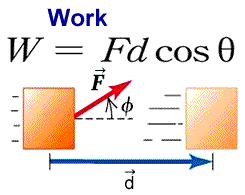

Many folks learning electronics for the first time struggle with the idea that a current limiting resistor can live on either side of the LED and the circuit will still function as usual. To make things a little more complicated, you can place the current limiting resistor on either side of the LED, and it will work just the same! Current Limiting Before or After the LED? With this setup, instead of having to choose the resistor for the LED, the resistor is already on-board with the LED so the current-limiting is accomplished without having to add a resistor by hand. If we simply connect the LED directly to the battery, the values for Ohm's law look like this: To be safe, we'd rather not drive the LED at its maximum current but rather its suggested current, which is listed on its datasheet as 18mA, or 0.018 amps. However, in this experiment we are simply trying to protect the LED from over-current, so we will neglect the current characteristics of the LED and choose the resistor value using Ohm's Law in order to be sure that the current through the LED is safely under 20mA.įor this example, we have a 9 volt battery and a red LED with a current rating of 20 milliamps, or 0.020 amps. The LED introduces something called a "voltage drop" into the circuit, thus changing the amount of current running through it. This means that the equation for the current flowing through the LED itself is not as simple as V=IR. NOTE: LEDs are what's known as a "non-ohmic" devices.

The three basic principles for this tutorial can be explained using electrons, or more specifically, the charge they create: They all operate using the same basic power source: the movement of electrons. Your lightbulb, your stereo, your phone, etc., are all harnessing the movement of the electrons in order to do work.

Electrons create charge, which we can harness to do work. The result you obtain is watt-hours which is the power consumption of the day.Electricity is the movement of electrons. You can multiply the mentioned watt value by the number of hours of its usage. They are:īefore the calculation of power consumption formula, you have to make sure what the watt of the device uses per day is. To calculate the power calculation formula, we have to remember three equations. How Do You Determine the Power Calculation Formula? Power formula is written as, P = \ V(t)I(t)dt The amount of energy utilized to perform certain work in unit time is indicated as power.


 0 kommentar(er)
0 kommentar(er)
